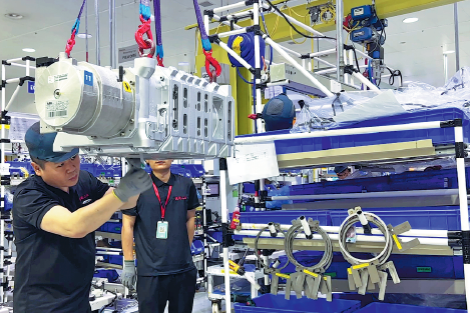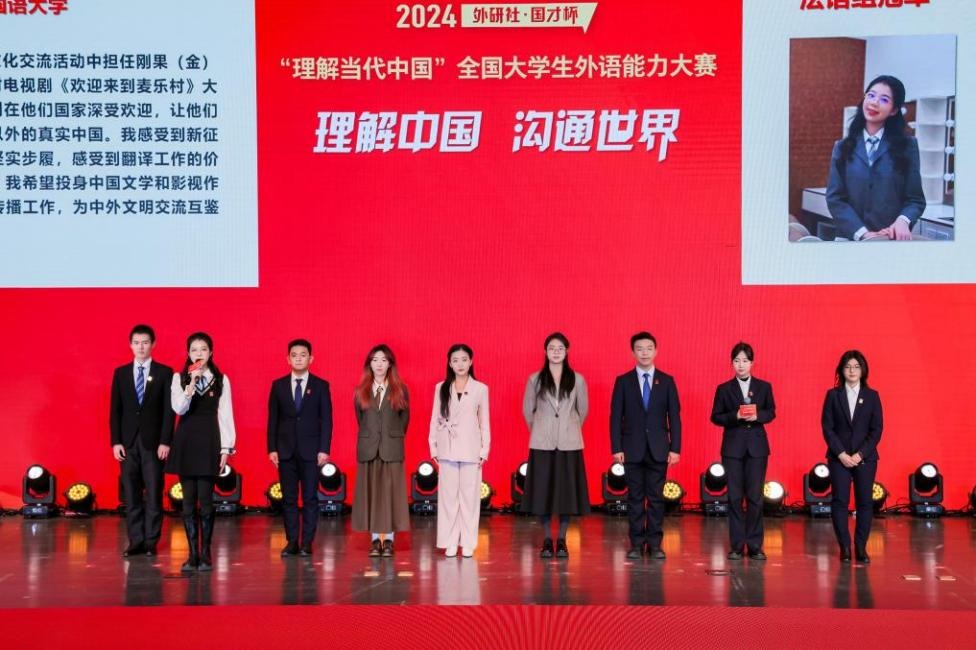Plenum affirms China on right path


Global tensions are on the rise. The international situation is fraught with challenges including the continuing COVID-19 pandemic, climate change, economic headwinds, and increasing threats to peace and stability.
The just concluded Sixth Plenary Session of the 19th Communist Party of China Central Committee in Beijing considered and adopted policy approaches to address these global challenges, build a community with a shared future for mankind and realize national rejuvenation.
That 2021 marks the 100th anniversary of the founding of the CPC lent added importance to the sixth plenary session. Much has been written and said about the transformation of China, but there are some things that supporters and critics alike agree on-thanks to the CPC's leadership, China has lifted more than 750 million people out of poverty, become the world's second-largest economy and occupied an important position on the global stage.
As for the sixth plenary session, for only the third time in its history, the Party adopted a "historical resolution"-the Resolution on the Major Achievements and Historical Experience of the Party over the Past Century-which emphasizes the great strides China has made in economic development and national security.
China's rise, so often portrayed in the foreign media as a threat to the so-called rules-based order, is actually a true reflection of the achievements of the Party and the Chinese people. In contrast to the claim of some Western media and politicians, the real threat to global peace and stability lies in these anti-China narratives that seek to sway international opinion and justify primarily Anglo-American-led policies to contain China. These policies have proven not only economically damaging to China, but also undermined the vitality of the global economy and seriously disrupted the social and economic fabric of the United States, the European Union and other economies.
The historical experience of China has informed the Party's adherence to a peaceful development model and underpins China's balanced and consistent approach to reciprocal and mutually beneficial engagement with its trade and investment partners. For the developing world, the advanced economies' over-securitization of international trade and investment has constrained globalization, limited technological and scientific advancement and technology transfers, and put more pressure on least-developed countries where the socioeconomic spillover effects are felt much earlier and more deeply.
A key objective of the Sixth Plenary Session of the 19th CPC Central Committee was to ensure China continues to adhere to its peaceful development path to ensure that further reform and opening-up strengthen global patterns of development and help maintain security. At the heart of China's "dual circulation" development paradigm is the notion that the country's continuing economic dynamism enhances global economic activity and therefore acts as a stabilizing factor for global security.
However, many in the West have been trying to demonize China, in order to balance their own internal disharmony with narratives of external threats. The resulting politicization and securitization of trade and investment has led to bloated military spending, slanderous accusations of human rights abuses and damaging economic sanctions.
The foreign media's coverage of the sixth plenary session is a case in point. The focus has been skewed toward misrepresentations of China's democratic process and political system, which differs from the representative-presidential model of the US.
Anglo-American media has portrayed China's recent reforms in the high-tech, education and energy generation sectors as crackdowns and consolidation of government control. In fact, most Western media outlets ignore these constructive efforts by China to keep markets balanced and competitive, ease the burden on students and their families, and expedite the transition to renewables. They also ignore the rising wealth inequality, inflationary pressures and crumbling infrastructure in their home countries.
The anti-China narrative is applied to almost all of China's development initiatives, including the Belt and Road Initiative (BRI), which not only connects more than 140 countries, many of them landlocked, but has also helped to boost economic development in much of the developing world. The BRI has given developing countries access to China's burgeoning market while expanding interregional trade and investment. The mutually beneficial China-ASEAN partnership is an important example of China's win-win ethos at work.
China and the Association of Southeast Asian Nations have become each other's largest trade partners, and with economic development and increased capacity building amongst the 10 ASEAN members, China, Japan, the Republic of Korea, Australia and New Zealand have signed the Regional Comprehensive Economic Partnership agreement, which will come into effect on Jan 1, 2022.
Similarly, the Belt and Road Initiative has enabled the economies of Central Asian countries, Pakistan, Iran and Russia to realize development, long denied them by geography, foreign intervention and economic sanctions. Despite the continuing efforts of some Western powers to coerce these countries into submission, trade and investment has flourished, generating significant benefits for China's western and southwestern regions. As such, the "dual circulation" development paradigm and the Belt and Road Initiative have become important drivers of both regional economic development and political stability.
China's pursuit of national rejuvenation inspires the developing world to believe that the centuries of colonial exploitation and discriminatory policies of neo-liberalism may be coming to an end. China's focus and leadership on sustainability and renewables are other signs that the developing countries can achieve economic progress through multilateral policy alignment and the exercise of good governance.
China's digital transformation, too, offers an alternative to the developed economies' monopolization of technology transfer and industrial upgrading which has hampered development in many developing countries. Low-cost, efficient logistics, improved monitoring and tracking of cross-border trade, access to best-in-class telecommunications and satellite navigation, construction of ports and industrial parks, and direct payment availability that reduces the reliance on the US dollar as an international currency are all beneficial developments for the developing world.
The sixth plenary session has confirmed China's historically correct path. It also confirmed that China will continue to focus on improving the material well-being of its people and share those benefits with the developing world. And it emphasized that the path to economic development is through multilateral approaches to trade and investment and consensus-driven mechanisms for dispute resolution, while reaffirming China's cooperation with other countries to address global challenges such as the COVID-19 pandemic, climate change and conflict resolution.
Significantly, the sixth plenary session confirmed China's steadfastness and determination to help improve global governance and adherence to the path of sustainable and equitable economic development, so as to build a community with a shared future for mankind.
The author is an Australian scholar and political analyst at Deakin University, Melbourne Australia, and a visiting international relations scholar at Sichuan Normal University.
The views don't necessarily reflect those of China Daily.
If you have a specific expertise, or would like to share your thought about our stories, then send us your writings at opinion@chinadaily.com.cn, and comment@chinadaily.com.cn.


































